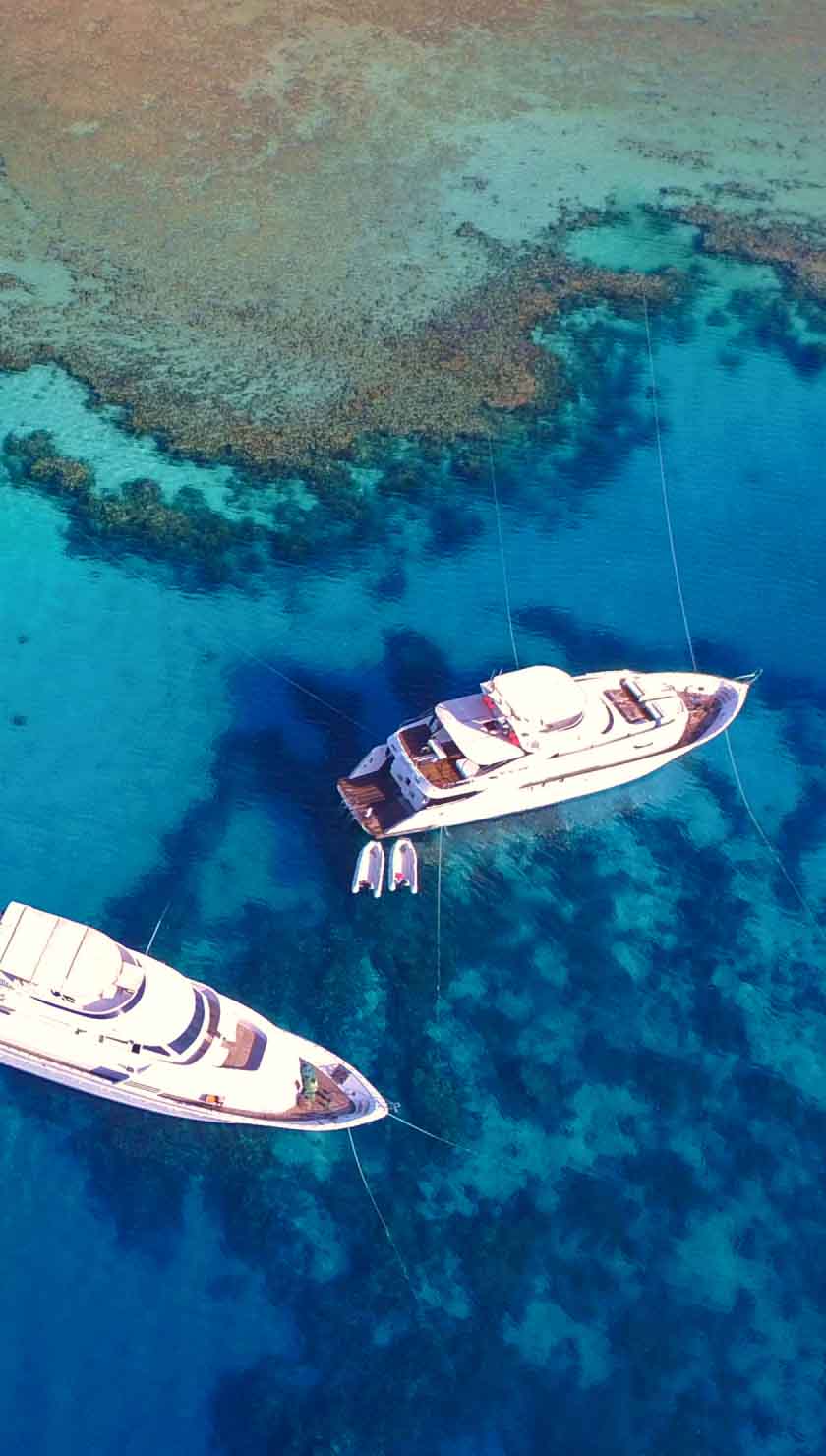Liveaboard Diving in Sea Of Cortez
What To Expect On A Sea Of Cortez Liveaboard
Liveaboards to the Sea of Cortez in Mexico will usually visit between the months of July and October. Unlike most of the other dive sites in this area of the Pacific Ocean, the reef here is flourishing and incredibly colorful. This results in a high diversity of smaller species, but have no fear, there are some large species spectacles as well.
Sometimes also known as the Gulf of California which stretches 1,200km (745mi) and is sheltered from the Pacific Ocean by the Baja California peninsula, a gulf which has thousands of islands and pinnacles and calm waters; a paradise for divers. This is a popular diving area and even though there are possibilities for day trips a liveaboard cruise will allow you to reach more dive sites and areas in comfort.
SEA OF CORTEZ UNDERWATER
This gulf is part of the Pacific Ocean but with the benefit of it being sheltered off, making it a calm area for species of all shapes and sizes to relax in. The sea lions are the most well-known attraction of this area, cheeky and curious they play with the divers and in the months of August and September is when the juveniles are around, which are even more playful! There are many cetaceans which travel through here including schools of Hammerhead sharks, Manta Rays, Dolphins, in January to March Grey whales, Blue whales and whale sharks are around but a little rarer to see. During these winter months, the amount of plankton in the water is at a high, which means less visibility but more whales. The flourishing reefs filled with sponges, sea fans, and soft and hard corals of all shapes and sizes and it inhabits many smaller creatures including many species of Nudibranchs which help make reef just that more colorful, sea horses, angelfish and much more.
DIVE SITES OF THE SEA OF CORTEZ
La Vela, Angel Island: located in the North of the Sea of Cortez, you can spot marine life of all shapes and sizes, from curious and playful sea lions to colorful Nudibranchs and schools of Mobula Rays.
El Arrayo, Punta Martir: A sea wall dive which extends down past 40m (120ft), and this wall inhabit a lot of marine life including multiple species of moray eels, seahorses, and schools of reef fish. In August and September, juvenile sea lions are everywhere, a really fun experience.
El Lavadero, Las Animas: This is a spiritual dive site where each jack in the school of jacks represents a lost soul that all swim around the pinnacle of this dive site. The jacks are often joined by schools of tuna and the main spectacle; Hammerhead sharks.
TOP TIPS FOR DIVERS
Sea of Cortez is in general quite calm with the possibility of big waves, however, each liveaboard has their own minimum dive experience level, please always check this before booking and it is important to remember your dive logs/logbooks. It is possible to rent equipment but it will be more comfortable to use your own gear, so if possible bring that with. With the large diversity of marine life you will have the chance to see, it would be completely worth it to bring an underwater camera to capture the memories.
The depth of these dive sites ranges from 5m (15ft) to 40m (120ft), and the visibility at its worst is 15m (45ft) and at its best 35m (105ft), with water temperatures ranging from 20 degrees Celsius up to 29 degrees Celsius.
The main language is Spanish; however, English is widely spoken all around the country and on the liveaboards. The currency is the Mexican Peso, and you can easily exchange all popular currencies such as US dollars and Euros, etc.
The plug is the same as in the U.S.: two flat prongs with the standard voltage being 127V. Please remember to bring an adaptor for all your electrics if you are not coming from the US.
GETTING TO SEA OF CORTEZ
There are two ports from which the Mexican liveaboards we have to offer to depart; these are Cabo San Lucas and Puerto Peñasco. Cabo San Lucas is a city in the state of Baja California and is located in the southernmost municipality, Los Cabos, in Mexico. The closest international airport to this city is Los Cabos International Airport, which has flights arriving from the United States, Canada, and other Mexican Cities. Puerto Peñasco is located in the state of Sonora, the small piece of land that connects Baja California with the rest of Mexico. In July 2016 Puerto Peñasco Airport will receive flights from domestic destinations, till then most fly into Yuma International Airport in Arizona, which is located 180km (112mi) from Puerto Peñasco.











